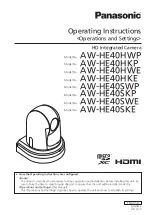
28
RGB:
Color model, in which all detectable colors are defined by three coordinates,
Red, Green and Blue.
Red
Green
Blue
Black
White
The three coordinates are displayed within the buffer in the order R, G, B.
BGR:
Here the color alignment mirrors
RGB.
YUV:
Color model, which is used in the PAL TV standard and in image compression.
In YUV, a high bandwidth luminance signal (Y: luma information) is transmitted
together with two color difference signals with low bandwidth (U and V: chroma
information). Thereby U represents the difference between blue and luminance
(U = B - Y), V is the difference between red and luminance (V = R - Y). The third
color, green, does not need to be transmitted, its value can be calculated from
the other three values.
YUV 4:4:4
Here each of the three components has the same sample rate.
Therefore there is no subsampling here.
YUV 4:2:2
The chroma components are sampled at half the sample rate.
This reduces the necessary bandwidth to two-thirds (in relation to
4:4:4) and causes no, or low visual differences.
YUV 4:1:1
Here the chroma components are sampled at a quarter of the
sample rate.This decreases the necessary bandwith by half (in
relation to 4:4:4).
Pixel depth:
In general, pixel depth defines the number of possible different values for
each color channel. Mostly this will be 8 bit, which means 2
8
different "col-
ors".
For
RGB or BGR these 8 bits per channel equal 24 bits overall.
8 bit:
Byte 1
Byte 2
Byte 3
10 bit:
Byte 1
Byte 2
unused bits
12 bit:
Byte 1
Byte 2
unused bits
Figure 9 ►
RBG color space dis
-
played as color tube.
Figure 10 ►
Bit string of
Mono 8 bit
and
RGB 8 bit.
Figure 12 ►
Spreading of Mono 12
bit over two bytes.
Figure 11 ►
Spreading of Mono 10
bit over 2 bytes.
















































